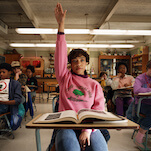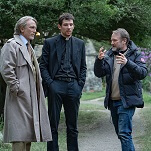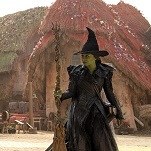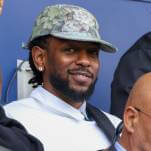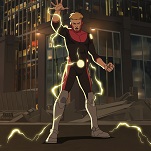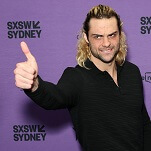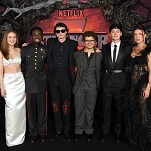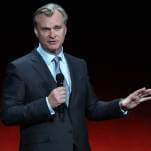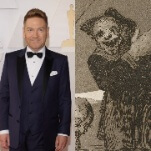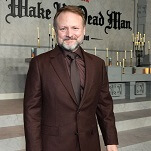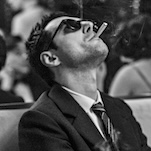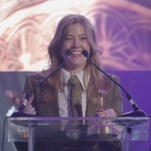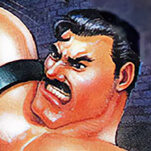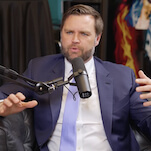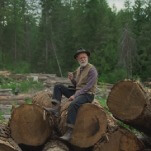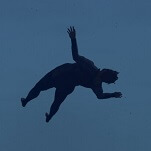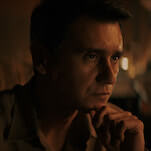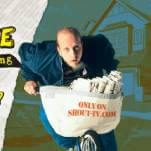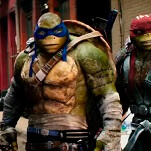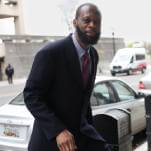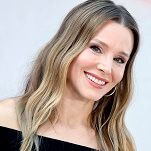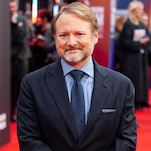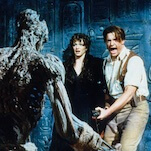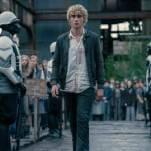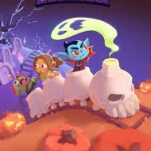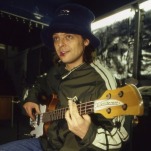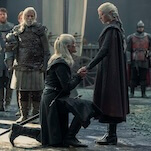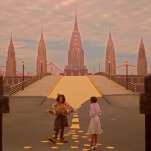What’s it like going from Jurassic Park to directing TV?
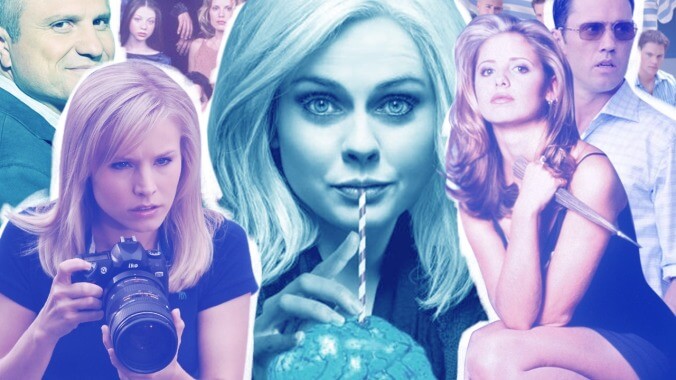

In Expert Witness, The A.V. Club talks to industry insiders to shed some light on how the pop culture sausage gets made. In this installment, we talk to longtime TV director John T. Kretchmer to discuss all the unusual and unexpected ways directing for the small screen is different than directing for the big screen.
John T. Kretchmer has been helming episodes of television for more than 20 years, from the short-lived sci-fi series SeaQuest 2032 to recent work on iZombie and Frequency. He takes us through the oft-misunderstood world of being a journeyman director in a medium tailored to writers and showrunners, how that’s changing, and what it was like being first assistant director for Steven Spielberg on Jurassic Park.
The A.V. Club: Where did you grow up?
John Kretchmer: I grew up outside of Chicago in two suburbs: Glencoe and Winnetka, just above Evanston where Northwestern University is.
AVC: How old were you when you first started thinking this might be a field you wanted to be involved in?
JK: Well, I had been involved in theater since high school and throughout college, acting. When I was a sophomore, I realized that acting wasn’t going to be a good career choice for me because I never had the genius of Brando, nor did I have the stamina to live without eating. So I decided after my sophomore year that the idea of directing was quite frankly a little frightening to me because I didn’t know how to stage things. I wasn’t comfortable figuring out how to block a scene. So I thought, well, maybe I’ll be a producer, and I define myself as wanting to be the John Hammond of theater, meaning one of those guys who discovers people and makes them famous in the field.
And so when I left college, I got a job in a new theater in Evanston, called the Evanston Theater Company—now it’s called Northlight—in their premiere season. And I worked there, and I discovered that at that time, interestingly enough, the audiences in Chicago were not ready for the kind of theater I wanted to do. So I was talking with a friend of mine who was already living in Los Angeles trying to get a career going as a writer. He said, “Well, why don’t you come out to L.A.?” And I thought, “Well, I’ve loved movies all my life, why not? I don’t think I’m going to be able to do what I want to do here in Chicago.” And I didn’t want to go to New York because that frightened the heck out of me. The competition was too fierce. So I packed up and moved to Los Angeles, thinking that I’d want to become a producer, and as I got more and more work, I very quickly realized that directing was probably the most creative and the most fun position and I developed a skill set for it.
AVC: Did you start out as a P.A. there, as so many people do?
JK: My very first couple jobs were as a production assistant, but it wasn’t steady, and the first movie that I was a production assistant on was The Kentucky Fried Movie, which was written by Jim Abrahams and Jerry and David Zucker, who went on to Airplane! fame. And we’ll circle back to that, but I had an introduction to them through my parents, who knew their parents, the Zuckers. We shot 10 minutes of the film, and they went out and shot those 10 minutes, and while they were shopping, I ended up getting a job as a craft serviceman, which is a guy who either gets coffee and doughnuts for the crew or works as a laborer for the special set people. So I had a union position at Universal Studios as a craft serviceman, and it was working on film sets, which I loved, but it was certainly a low position.
While I was working as a craft serviceman on a film called Rollercoaster, starring George Segal, I met a guy named Eddie Milkovich, who was the assistant director trainee on the show, and I didn’t know what that was. So he explained that he’d gotten into a program that is sponsored jointly by the Directors Guild Of America and the Producers Guild Of America to train assistant directors. So I thought, well, “Look, I don’t know anyone in this town. This seems like a good entrée.” And as an assistant director, I could probably learn a bit more about producing and/or directing. So I applied for the program and went through the testing process and the interview process, which was rather rigorous, and got in and proceeded to work a year-plus as a trainee, and then at the end of the program, I was automatically a second assistant director, and my first job was on the [Peter Falk and Alan Arkin] film The In-Laws.
AVC: You spent the year in the program basically being trained how to be an assistant director. What are your duties as an assistant director?
JK: An equivalent of assistant director in stage is a stage manager in theater or as a sergeant major or as a first officer to a ship’s captain. The job of the first assistant director is to schedule the show and ensure that all of the elements that are in each of the scenes are scheduled, are available to the director on the day they are scheduled. The cast members, the props, all the detail work that has to go into making the scene to ensure all those elements are there. And through a lot of analysis and a lot of meetings, and then on the day of the show, the assistant director makes sure everyone’s ready and has to hold the camera and once the director says they have the scene, motivate the company to get into the next scene. So it’s both organizational and motivational. And can be creative. The assistant director is also in charge of setting the background players, the extras, to make sure they look natural and things like that.
AVC: What’s the difference between first assistant director and second assistant director?
JK: It’s a matter of protocol. The first assistant director is the one who works very closely side by side with the director and communicates the director’s wants and needs to everybody else. The second director is the foot soldier who helps carry that stuff out. The second director has a more direct relationship with getting the cast ready in the morning and getting them on the set, organizing the extras and bringing them to the set. There’s a lot of paperwork involved including the call sheet, which tells you what the next day’s work day is. And the production report, which tells the studio what you’ve accomplished that day both in terms of the number of hours shot, how many feet of film or minutes of video you have shot. So the second assistant is both a leg person and a clerk in many ways, in terms of the paperwork. Getting actors assigned contracts, having the extras sign their vouchers. Things like that. The first assistant director is the direct conduit from the director to everyone else.
AVC: It’s almost like the second assistant director is to the assistant director as the assistant director is to the director. Is that an accurate way to put it?
JK: I think that’s a very fair analysis. The second assistant director position doesn’t involve as much creativity, necessarily, as the assistant director because the assistant director is working with the director and the camera person, the director of photography.
The other responsibility the first assistant has, and it’s an important one, is to ensure the company keeps moving. You get the day’s work so if the director’s falling behind, it’s on the first assistant director to go to the director and say, “Look, we’ve got a problem here. We have to be finished by such and such a time or we lose these kids.” Kids can only work for a certain number of hours a day. We lose these kids in three hours, you have to be a bit of a taskmaster to the director, but it’s important, and it was emphasized to me as I was working with this. I was there to work as an assistant director, not an assistant producer. I’m not ultimately responsible for cracking the whip on the director.
The assistant director can crack the whip on the crew a bit, but you try and do it in way that isn’t overbearing. I try to do it with humor because my talents as an assistant director were directly related to how much I could motivate people to do what they wouldn’t ordinarily do in normal life. So I never found that yelling at people was an effective motivational force. I still don’t.
AVC: How did you work your way up from second assistant director to first assistant director?
JK: I had been with some really wonderful first assistant directors, primarily Jack Roe, who sadly is no longer with us. He was a legendary first assistant director in Hollywood and had done films like Funny Girl and Paint Your Wagon. Big pictures. We did The In-Laws together and a bunch of other Neil Simon movies, things like that. So I had reached a point after a couple years with Jack, where I felt I had gotten the second assistant director stuff down, and I had ambition and I wanted to move up.
Then I got on a television show called Houston Mack because the production manager had been my second assistant director, and she hired me in Oregon, and hired me to work as an alternating first on Houston Mack, and that was a huge break. And then her boss asked me to be his first on a film called Protocol because I had been his second assistant director on I Ought To Be In Pictures. There’s so much luck involved in this career, and I am thankful every single day for all of the people who opened those doors for me because I truly wouldn’t be where I am today if it hadn’t been for the kindness of acquaintances.
AVC: Once you made that switch, you were first assistant director on a number of very different sort of large genre projects. Everything from The Naked Gun to Flatliners to Jurassic Park. How did your responsibilities change from project to project, things that dictate what your role was on those different films?
JK: That’s a really good question and something I never really thought about. I think there is some chameleon nature to a first assistant director in that, as an assistant, you have to work with completely different personalities all the time both in terms of directors and cast and producers. So you have to be a very good diplomat, I think. But ultimately, the job was the same, whether it was a comedy or a drama or a horror picture. You still have to schedule the show efficiently. You have to have all the elements there, and you have to keep things moving.
Some are more challenging than others, and some are more complicated than others. When we did Jurassic Park, no one had done CGI to the extent that we did it. Although I had been on the very first movie that ever employed CGI, which was a film called Looker, which Michael Crichton directed. But that was in its early infancy. Jurassic was the first great leap into CGI, and I had again the great fortune of being there when it happened, through no design of my own. So that presented different challenges, figuring out how to actually shoot the stuff and allow for CGI. That was a new thing that hadn’t really been dealt with in previous films because everything was live action.
The big challenge on Jurassic, which I spent three months trying to figure out with everybody else, is what was going to be the animatronic, what was going to be a puppet, what was going to be the live action, what was going to be CGI. And once we figured that out, then I could schedule the picture. But I couldn’t do that until we had gone through that long process of looking at every single one of Steven [Spielberg]’s storyboards and saying, “Okay, who’s going to handle this?” And that took about three months to do.
AVC: While you were an assistant director, what were the things that you felt like you needed to master in order to feel comfortable making that jump to actually directing yourself?
JK: I had decided fairly early on in my career that I shifted my interest from being a producer to being a director. So I had read a lot of books, I studied a lot of movies, but even more importantly, I worked with a lot of different directors, and in many cases, you learn more from the ones who aren’t very good than from the ones who are good.
But I did learn efficiency from a director named Jerry London, who had directed Shogun. I did a couple projects with Jerry. He was a former editor, and he really crystallized for me the most efficient way to shoot a scene in terms of what order you do your shots. And of course, I learned more from Steven [Spielberg] in six months than I learned from anybody in 16 years before that, both inspirationally and creatively and technically.
When I was a craft serviceman, I used to play a game with the camera assistants on Rollercoaster. They would have a zoom lens on and they’d set it at a certain millimeter, and I looked through the zoom finder without looking at the lens and I’d have to guess what the lens was. After a while, you sort of train your eye to know what a 24 lens looks like or an 85. And that was an important skill to develop.
Most importantly, as an assistant director, as I said earlier, you have to be a diplomat, and if you do nothing else as a director, you’re working with people and you’re working with artists and you’re working with people of vastly different temperaments and psychologies. So you need that skill more than any other skill. If you have a good director of photography, you have a good assistant director, you have a good script supervisor, then anybody can direct. You can put a film together. But if you can’t direct actors, you’re screwed. If you can’t work with actors, if you can’t figure out how to deal with them from a psychological standpoint, you’re sunk. And so again, being a diplomat was great training for that.
AVC: You finally got the chance to direct—with a couple episodes of SeaQuest 2032.
JK: During Jurassic Park with Steven Spielberg—in the course of that I went to Kathleen Kennedy, who was co-producer on it, and said, “I know you guys are starting a new TV show, SeaQuest. I will happily work for scale salary as a first assistant director if I can get a shot at directing an episode.” And Kathy came back 24 hours later and said okay. And with Steven and Kathy’s support, I went on to SeaQuest and directed one episode, and then directed another. And then got an agent and a manager, and it took about two years before I could support my family strictly as a director, but I made the commitment to leave assistant directing, and with one small exception, was able to continue as a director and have been doing that now for over 20 years.
AVC: What were the things that surprised you in going through that experience for the first time?
JK: Let me say this first. I learn every day I work. I learn something new every single day. And that’s one of the joys of this job is you never stop learning. Ken Zucker was a cameraman on SeaQuest, and he taught me a tremendous amount of helping me to stage for television. This is a sort of in-the-weeds kind of example: You can stage a walk-and-talk—where people are walking and talking, where they travel with you—and then they stop and you’re seeing both of them. Which means then, you have to have two more pieces of coverage. One [camera shot] over one character and another for the other character. Kenny said, “No, what you should do is, rather than have them stop in a two-shot, a 50-50, you have one character roll over so that you go from a two-shot walk-and-talk immediately to one piece of coverage.” So you’re saving one setup, which is saving 20 minutes to half an hour out of the day. So those are the kinds of things that I didn’t think about as an assistant director as much.
But as a television director, what motivates you more than anything is the clock, because you have to complete your day in 12 hours. That’s the goal. So it’s a much faster pace. In features, you generally shoot 2.5 to three pages a day. In television, you shoot anywhere from 6.5 to as many as 10.5 pages a day. So the efficiency of your shooting becomes much more vital. I had a fairly good foundation as an assistant director on how to organize myself efficiently, but I think what those two first episodes taught me the most was how to implement efficiencies in a way that not only got the day’s work done but also got it done in what one hopes is an interesting manner that isn’t just a matter of a master shot with two close-ups. You do something that is visually more interesting than that, and that was my goal.
AVC: What would a normal day be like for you when you’re shooting?
JK: That’s a good question because every day is completely different. You’re filming a new scene. You never repeat scenes. You’re working with different actors on every show you do. But generally, it means you arrive on the set at 6:30 in the morning, and you have a rehearsal at 7. You work as quickly as you can. I’ve given a lecture at the Writers Guild, which basically says that directing in television is math. It’s not anything but math, and the reason is that you have 12 hours in a day. Generally it takes 20 minutes for every setup you do, every camera angle you do. Therefore, you get a chance to do 36 setups a day. If you have more than 36 setups scheduled for that day, you’re not going to make your day. So part of the prep process is to figure out how many setups I have a day.
So you go in and you have rehearsal, which usually lasts about 10 to 15 minutes. You turn the set over to the crew. They’ll light on the first setup for a half hour to 40 minutes. You try to get your first shot within your first hour of the day. And then you proceed from there. Every hour is the goal. Some days are more complicated than others, and some have more actors. And you have to work very closely with both the director of photography and the assistant director to lay out what you see as being where you want to be at lunch. I’m very cognitive of the clock because I won’t continue to get work if I shoot over schedule, and certainly, every episode is a moving freight train because you only get seven or eight days to do an episode. So you work for—one hopes—12 hours, plus a half hour, 45 minutes for lunch. During that day, I’ll look at the dailies from the day before and I’ll also try and prep for my next day so I don’t have to bring work home. But oftentimes, you do bring work home, so from start to finish, it’s a 16-hour a day for a director, generally.
AVC: How long does each job usually last in terms of an episode from start to finish?
JK: It’s seven to eight days of preparation, business days. And then seven to eight days of shooting depending on what the show is. For instance, when I was doing all the USA shows, like White Collar? Seven-day shows. I’m currently working on a wonderful show called Life Sentence. It’s an eight-day show. And then four days after you finish, the editor sends a cut to you, and if you’re in Los Angeles, you go into the editing room for four days. So the whole process turns out to be about a month per episode.
AVC: How does one come aboard a show? How do you get hired?
JK: That’s a great mystery. There’s usually one of two ways. One is your agent gets you an interview with someone you haven’t worked with before, and they will look at your résumé and look at the kind of shows you’ve done and check you out by word of mouth. Or more often, you’re rehired by people who know you already. In this particular instance, I’m working as a producer-director on Life Sentence, and I got the interview because I had done a fair amount of work for Warner Bros. and the CW network, so my name was known to them. And one of the creators of the show, Richard Keith, was an actor that I had directed in an episode of Veronica Mars many years ago. And he remembered me, and then both he and his writing partner, Erin Cardillo, who created this show, had attended one of the seminars I had given at the Writers Guild. So when my name came up, I guess they became interested, and we hit it off. And they’re just fantastic people and they’re so creative, so this is a terrific job. We’ve only done one episode, but I can tell this is going to be a great show.
AVC: Are there shows that stand out for being experiences that really taught you a lot? You mentioned every day is a new chance to learn something, but are there shows that were momentous for you?
JK: In order from oldest to newest, I think working on Hercules and Xena, which were more fun than a barrel of monkeys, taught me efficiency because the Kiwis will only shoot for 12.5 hours and then they go home. There’s no if, ands, or buts about that. They would literally just set down their tools and walk away. Unlike here, where if you go over, the crews will stay with you and they’re getting overtime for it, and the line producer and production manager look at you. That wasn’t even a possibility because they would just walk away. I had to get my days in 12 hours. So that was great. Those shows really laid it down for me in being as efficient as possible.
I think doing Nash Bridges, working with Don Johnson, who is a complicated character, he actually taught me a lot about framing a shot for a star, ensuring that the best background be reserved for the star of the show as opposed to some day player. If you remember, Nash Bridges took place in San Francisco, and the precinct station was a barge in San Francisco Harbor. So if you had a table scene, you always ensure that the water was behind Don so that it was a prettier background. And if you shot the other characters, they’re always against a wall or a door or something. He got the attractive background. But he’s right. It was a smart thing on his part to insist on, and that was a very good lesson.
Working with Jeffrey Donovan on Burn Notice was a huge step forward for me as a director because Jeffrey is also a complicated person, a superb actor, breathtakingly wonderful. He challenged me to justify my choices and taught me the value of involving the actor collaboratively in the staging of the scene. So doing those nine episodes with Jeffrey was absolutely seminal for me. And I think the shows that I’ve recently worked on as a producer-director, Army Wives, Forever, Frequency, and Life Sentence, it stretches different muscles, which comes in handy as a director. Producing is so much about figuring out a way to get it done with the money we have and that’s served me in good stead, I hope.
AVC: What about your work on Buffy The Vampire Slayer?
JK: I was dealing with a really highly, highly skilled cast. Those kids were terrific. I got stuff that was very exciting. It’s hard for me to judge how much that show got me future work. I know that remained, for many years, the best thing that I had ever done… I can remember a 10-page day in the library and they came to me and said, “Can you do this?” And I figured out a way to do it, and we were all very happy when I did it in 12 hours.
AVC: The role of TV director is obviously notably different than it is for film. It’s about the creator-executive producer’s vision, where you’re there to help make their vision come to fruition. Can you talk a little bit about what the director’s role is in that sense?
JK: Again, the thing that, as a television director, you have to remind yourself is—as opposed to a film director—it’s not my show. I’m only here for one episode. I am a small cog in a very large machine, and I am a small part of a very large arc of a see-saw. So I’m not there to impose my vision of what the show should be, as opposed to trying to figure out what it is they want. One of the things I do when I come on a show that’s been on is, I say, “Give me four or five of your best episodes, and let’s discuss what it is you liked about them.”
If the pilot was sold, I’m not going to change the visual scheme of what that director established in the pilot, and part of my job as an itinerary director and producer is to recreate the elements of the pilot that everyone was really happy with. For example, in Frequency, which is a show I dearly loved working on, I told Jeremy Carver, the showrunner, I had to throw out 20 years of all the aesthetic I had learned as a director and start from scratch because Jeremy’s aesthetic was antithetical to what is done conventionally. The framing was weird. The filming mistakes were something he encouraged. Using odd lenses and strange angles that were not necessarily what you try to enhance the visuals to help tell the story. He didn’t link the visuals with the storytelling necessarily. But having said that, he had a very clear vision of what he wanted the show to be, and it took me a day of shooting before I finally understood what it was he wanted, because you can theorize about it, but until you’re actually doing setups, and I had Jeremy by my side, I didn’t understand.
Now having said that, I can also bring certain things to the party that I think may advance the visuals. Let me give you a small example. On Veronica Mars, when I shot Kristen Bell, I shot her just a little tighter than everybody else in the show because I felt this was a journey that we were going through with her, and it would help the audience identify more strongly with her. And there are other more technical techniques, but my point is that I want to take what the pilot director has done and keep everything that’s been loved about that and maybe enhance it as much as you can.
AVC: It sounds almost like you have to become a different director each time, because you’re having to adopt a new style and aesthetic every time you do it.
JK: Absolutely, and also one of the great beauties of being a television director is you work in many, many different genres. Horror, science, science fiction, fantasy, soap opera, police procedural, comedy. That’s one of the great joys of doing what I do is that as I said to you earlier, every single day is different. Every single episode is different. Every single show is different. And the people you’re working with are different. So that’s one of the great opportunities of what I do for a living.
AVC: So for these shows where you’ve done multiple episodes, what’s the main difference from the first time you do an episode of the show vs. the second, the third, or the eighth time?
JK: Well, the first time is always a dance. It’s a dance with the producers. It’s a dance with the crew. And it’s a dance with the cast to try and convince them or fake them out that you know what you’re doing and not make anyone look like a fool. Basically what you’re trying to do, all so-called difficult actors are difficult from a place of insecurity. It’s that they’re worried that the director is going to make them look like an idiot. And if you can convince them that you’re there not only to help them but to make them look better than even they thought they could, then you can get them on your side and things go smoothly.
The same is true with the crew. If you come in and you aren’t decisive and you can’t make a decision, you will lose them with the first setup, but if you can come in and show them, “Okay, this is what I want and here’s how we get there and I know when I have it,” then they will fight for you. They want two things: They want to get a sense that their contributions are appreciated, which they are, and secondly, that they’re going to get home at a decent hour.
And then as time goes on, as you do more and more episodes, the key thing is just to keep your enthusiasm up, to show that you care, to show that you’re still excited about the prospect of doing an episode, that you can imbue your energy onto the set and to the cast. And also challenge them a bit. Certainly I found many times that if you found an angle or a shot that the crew hasn’t done, they think, “Hey this is kind of exciting that we haven’t done this before,” rather than same old, same old.
Here’s an example: Star Trek, which I worked on two of the series—Deep Space Nine and Voyager—it was fun to do a show that had been on the air for five years and try and find something to do that they hadn’t done before. Particularly on Deep Space Nine, the first show that I did with them, to do things that they thought were interesting. Same thing on Criminal Minds. I did some stuff on Criminal Minds that hadn’t been done. And they were in their seventh year, I think. So I saw a couple times when both the crew and cast got excited about trying something that hadn’t tried before. I’m not trying to toot my own horn; I’m just trying to say that, as a director, you have to try to do something that hasn’t been done before to make it interesting for them. And if you’re doing your 17th episode of Charmed, you want to do something that challenges yourself to continue to make it interesting.
AVC: What’s the most common thing that can go wrong while you’re directing?
JK: I’ll tell you a story that I often tell. I once worked with a director named Virgil Vogel. Virgil had started as an editor and became a director on The Big Valley because Barbara Stanwyck took a shine to him and thought he’d make a good director. He’d been directing for many years, and Virgil directed hundreds and hundreds of hours of television and had directed every genre with everyone who is anyone in the television business. And a friend of mine was about to make the switch from assistant directing to directing, and he went to Virgil and said, “Virgil, what is directing? What is the secret to being a successful director?” And he said, “Well, people think that directing is getting the script and working with the writers and getting the script shaped up and going out on location and choosing the most interesting location, and then you get with the actors, and you pull the performance out of them, and you get in the editing room and you choose the right angles and put them all together, and you lay out the sound and all that. No.” He says, “Directing is when you show up in the morning and they park the trucks in your shot.” [Laughs.] Which means that being a director is being flexible.
In television, unlike film, you can’t say, “I’m going to sit in my chair until you get on the set what I ask for.” You have to come up with a solution. So if you didn’t get the prop you wanted exactly, you either have to shoot what they’ve given you or you have to find a way to shoot around that prop and still make your day. There’s no one usual thing that goes wrong. Sometimes you have to squeeze into a much shorter time than you had planned because you’re running out of sunlight. Or you had 15 setups, and because you’re running out of time, you have to do it all in one setup. You have to design something that will work in one setup. Mind you, oftentimes—and I learned this from Spielberg—oftentimes the solution you have to come up with is much more interesting and more creative than your original idea. That was absolutely true with Steven. There were times when he gave us a shot and for one reason or another couldn’t get it, and I’d go to him and say, “Steven, I’m sorry, we can’t get this shot as you designed it because XYZ.” And Steven would never stand on ceremony and say, “Goddamn it, I’m Steven Spielberg, and this is the shot and you guys have to figure out a way to do it.” He would say, “Okay, well then, let’s put the camera over here and do this and do that.” And more often than not, his new idea was better than his first. And it was extraordinarily inspirational to me as a director. So I try very hard not to throw a hissy fit when I can’t get what I want and look upon it as an opportunity to do something a little more interesting.
If I could just emphasize one more thing: One doesn’t get to do what I do without the help and the encouragement of countless other people, beginning with one’s parents and then going on to the people one has a professional relationship with, and I am very cognizant of the fact that I stand on the shoulders of giants and I am forever grateful for the opportunities and the incredible luck and I emphasize that, luck, I’ve had in the course of my career. I hope that I’ve been prepared when the opportunity arises to take advantage of that luck, but there’s a huge amount of luck in anyone’s career in this business, and so I hope that I’m kept humbled by that knowledge, that had something else happened, I wouldn’t be where I am right now, which is in Vancouver producing and directing a wonderful new TV show.
GET A.V.CLUB RIGHT IN YOUR INBOX
Pop culture obsessives writing for the pop culture obsessed.

